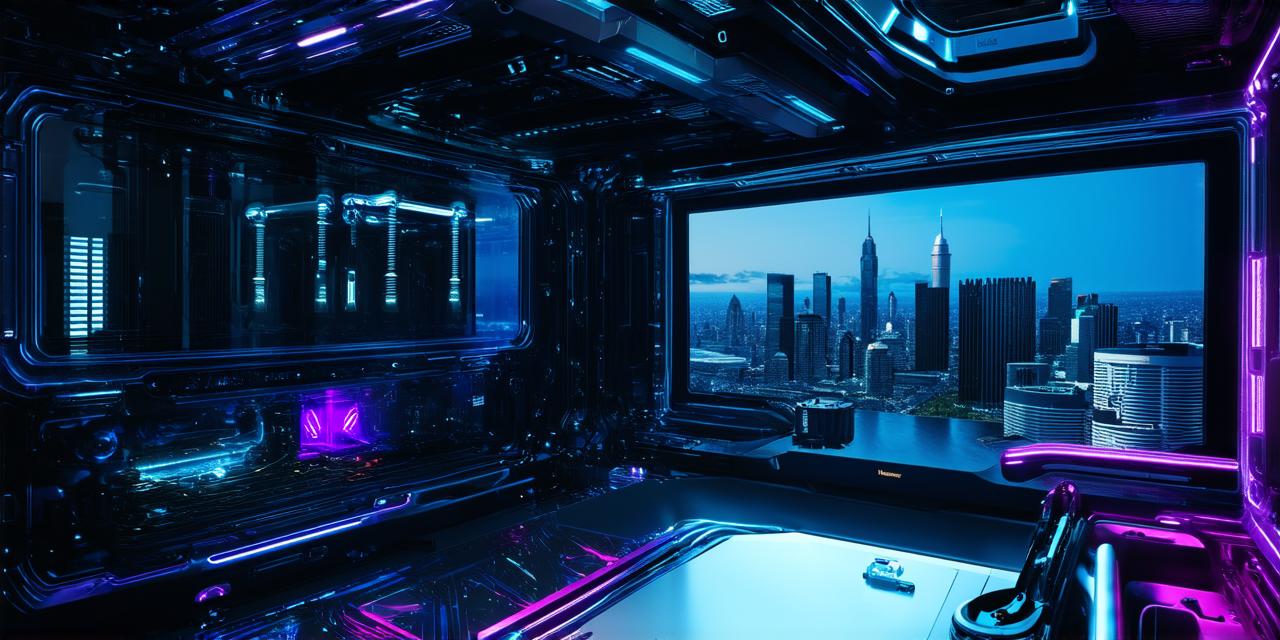<!DOCTYPE html>
Microsoft HoloLens 2: The Latest Addition to the Family
Microsoft has recently released the second generation of its flagship VR headset, the HoloLens 2. This new version boasts several major improvements over its predecessor, including a more comfortable design, improved visual quality, and better motion tracking capabilities. The HoloLens 2 also features an AI-powered voice assistant that allows users to interact with their virtual environment using natural language.
One of the most notable updates in the HoloLens 2 is its field of view, which has been expanded from 80 degrees to 115 degrees. This provides a more immersive experience for users and enables them to see more of their virtual environment at once. Additionally, the HoloLens 2 features dual-pano cameras that provide a wide-angle view of the user’s physical surroundings, allowing them to stay connected with the real world while using VR.
Microsoft’s AI-powered voice assistant, Cortana, has also been updated in the HoloLens 2. It now supports natural language commands and can perform tasks such as setting reminders, searching for information, and even playing music. This makes it easier for users to interact with their virtual environment without having to manually navigate through menus or controls.
Immersive Gaming Experiences with Microsoft VR
Microsoft’s entry into the VR market has opened up new possibilities for immersive gaming experiences. With the HoloLens, gamers can step into a virtual world and engage in a variety of interactive experiences that were previously impossible to achieve.
One such experience is Minecraft Earth, a VR game that allows players to build structures and explore their virtual world using hand gestures. Another popular game is Beat Saber, which uses VR controllers as light sabers to slice through incoming blocks in a rhythmic fashion. These games provide a level of immersion and interactivity that was previously unattainable, allowing gamers to fully engage with their environment in ways that were never possible before.
Improving Efficiency and Productivity in Enterprise Applications
Microsoft VR technology is not just limited to gaming applications. It has also found its way into enterprise environments, where it is being used to improve efficiency and productivity in a variety of industries. One such industry is architecture, where VR is being used to create immersive 3D models of buildings and structures. This allows architects and designers to visualize their creations in a more realistic and detailed manner, enabling them to make changes and adjustments on the fly without having to rely on traditional 2D blueprints.
Another industry that is benefiting from Microsoft VR technology is healthcare. In this industry, VR is being used to create immersive simulations of surgical procedures, allowing doctors and nurses to practice their skills in a safe and controlled environment before performing the actual procedure on a patient. This has the potential to improve patient outcomes and reduce the risk of complications during surgery.
Real-Life Examples of Microsoft VR Applications
There are many real-life examples of how Microsoft VR technology is being used in various industries. One such example is the use of VR in automotive manufacturing. In this industry, VR is being used to create immersive simulations of production processes, allowing manufacturers to identify and address potential issues before they become problems on the assembly line. This has the potential to improve quality control and reduce downtime, ultimately leading to increased efficiency and productivity.
Another example is the use of VR in the education sector. In this industry, VR is being used to create immersive learning experiences that allow students to explore historical events and scientific concepts in a more interactive and engaging manner. This has the potential to improve student engagement and understanding, ultimately leading to better academic outcomes.
Comparing Microsoft VR to Other Technologies
When it comes to virtual reality technology, Microsoft’s HoloLens is often compared to other VR devices such as the Oculus Quest and HTC Vive. While these devices also offer immersive experiences, they are generally considered more expensive and less accessible than the HoloLens. Additionally, the HoloLens’ unique AI-powered voice assistant and dual-pano cameras make it stand out from other VR devices in terms of its ability to integrate with the real world.
Summary
In conclusion, Microsoft Virtual Reality Development is rapidly advancing, providing new possibilities for immersive experiences in both gaming and enterprise environments. The HoloLens 2’s improvements in field of view, motion tracking capabilities, and AI-powered voice assistant make it a powerful tool for gamers and professionals alike. Real-life examples from industries such as automotive manufacturing and education demonstrate the potential of VR to improve efficiency and productivity. When compared to other VR devices, Microsoft’s HoloLens stands out for its unique features and accessibility. As VR continues to grow and evolve, we can expect to see even more exciting developments and applications emerge in the future.
